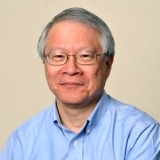Kenneth Yamada, M.D., Ph.D.
NIH/NIDCR
Building 30, Room 426
30 Convent Dr. MSC 4370
Bethesda, MD 20892-4370
United States
Dr. Kenneth Yamada’s research focuses on discovering novel mechanisms and regulators of cell interactions with the extracellular matrix and their roles in craniofacial development and disease. Understanding the underlying mechanisms of these fundamental processes can provide new approaches to tissue regeneration and therapy for diseases such as cancer. Dr. Yamada’s group explores how coordination between the three-dimensional (3D) extracellular matrix of connective tissue or basement membranes, integrins, signal transduction, and cytoskeleton mediates or regulates key biological processes – cell adhesion, migration, matrix remodeling, tissue morphogenesis, and cancer cell invasion. Dr. Yamada’s research emphasizes the characterization of the dynamic movements of cells and their extracellular matrix as tissues are remodeled in 3D in real time. The biological systems studied include human primary cells migrating in 3D, human tumor cells and tissues, and mouse organ development (salivary glands, lungs, and kidneys). Dr. Yamada also emphasizes training and mentoring the next generation of scientists.
Biographical Sketch
Dr. Yamada received B.A., M.D., and Ph.D. degrees from Stanford University. He was a section chief at the National Cancer Institute for 10 years and a section chief at NIDCR since 1990. Elected a Fellow of the AAAS in 1991, Dr. Yamada received the first Senior Investigator Award of the American Society for Matrix Biology in 2004, Distinguished Scientist Award of the American Association for Dental Research in 2008, and promotion to NIH distinguished investigator in 2011. Besides past service on the Councils of several professional societies, Dr. Yamada is currently an editor of The Journal of Cell Biology and serves other editorial roles at multiple journals. Dr. Yamada has published more than 400 highly cited papers. Dr. Yamada served on the NIH Cell Biology Study Section and currently serves on the NIH Committee on Scientific Conduct and Ethics and various other NIH committees.
- Lu J, Doyle AD, Shinsato Y, Wang S, Bodendorfer MA, Zheng M, Yamada KM. Basement membrane regulates fibronectin organization using sliding focal adhesions driven by a contractile winch. Dev Cell. 2020 Mar 9;52(5):631-646.e4. doi: 10.1016/j.devcel.2020.01.007. Epub 2020 Jan 30.
- Sekiguchi R, Martin D; Genomics and Computational Biology Core; Yamada KM. Single-cell RNA-seq identifies cell diversity in embryonic salivary glands. J Dent Res. 2020 Jan;99(1):69-78. doi: 10.1177/0022034519883888. Epub 2019 Oct 23.
- DuChez BJ, Doyle AD, Dimitriadis EK, Yamada KM. Durotaxis by human cancer cells. Biophys J. 2019 Feb 19;116(4):670-683. doi: 10.1016/j.bpj.2019.01.009. Epub 2019 Jan 12.
- Yamada KM, Sixt M. Mechanisms of 3D cell migration. Nat Rev Mol Cell Biol. 2019 Dec;20(12):738-752. doi: 10.1038/s41580-019-0172-9. Epub 2019.
- Wang S, Sekiguchi R, Daley WP, Yamada KM. Patterned cell and matrix dynamics in branching morphogenesis. J Cell Biol. 2017 Mar 6;216(3):559-570. doi: 10.1083/jcb.201610048. Epub 2017 Feb 7.
- Petrie RJ, Harlin HM, Korsak LI, Yamada KM. Activating the nuclear piston mechanism of 3D migration in tumor cells. J Cell Biol. 2017 Jan 2;216(1):93-100. doi: 10.1083/jcb.201605097. Epub 2016 Dec 20.
- Doyle AD, Carvajal N, Jin A, Matsumoto K, Yamada KM. Local 3D matrix microenvironment regulates cell migration through spatiotemporal dynamics of contractility-dependent adhesions. Nat Commun. 2015 Nov 9;6:8720. doi: 10.1038/ncomms9720.
- Petrie RJ, Koo H, Yamada KM. Generation of compartmentalized pressure by a nuclear piston governs cell motility in a 3D matrix. Science. 2014 Aug 29;345(6200):1062-5. doi: 10.1126/science.1256965.
- Onodera T, Sakai T, Hsu JC, Matsumoto K, Chiorini JA, Yamada KM. Btbd7 regulates epithelial cell dynamics and branching morphogenesis. Science. 2010 Jul 30;329(5991):562-5. doi: 10.1126/science.1191880.
- Sakai T, Larsen M, Yamada KM. Fibronectin requirement in branching morphogenesis. Nature. 2003 Jun 19;423(6942):876-81. doi: 10.1038/nature01712.

